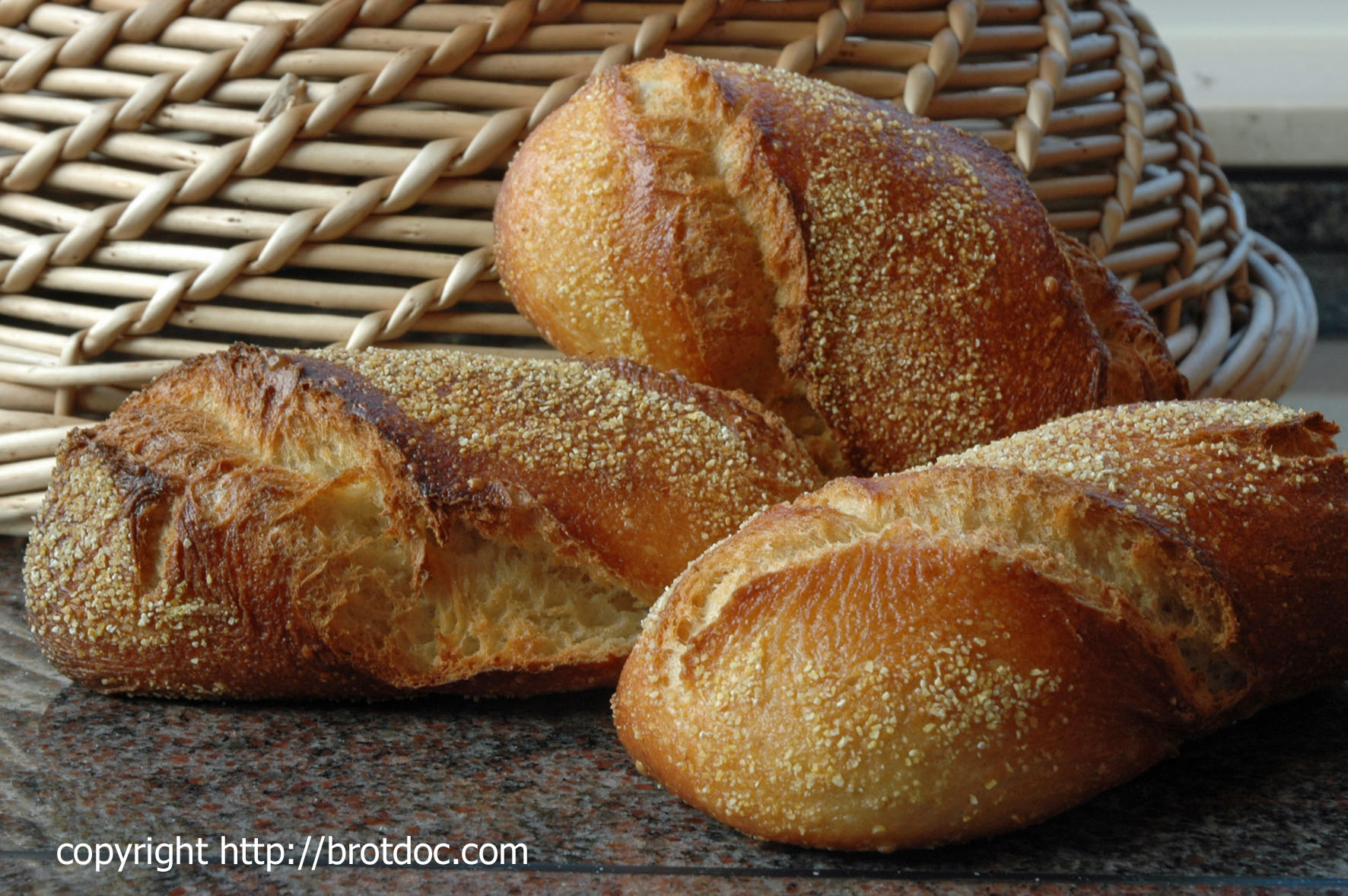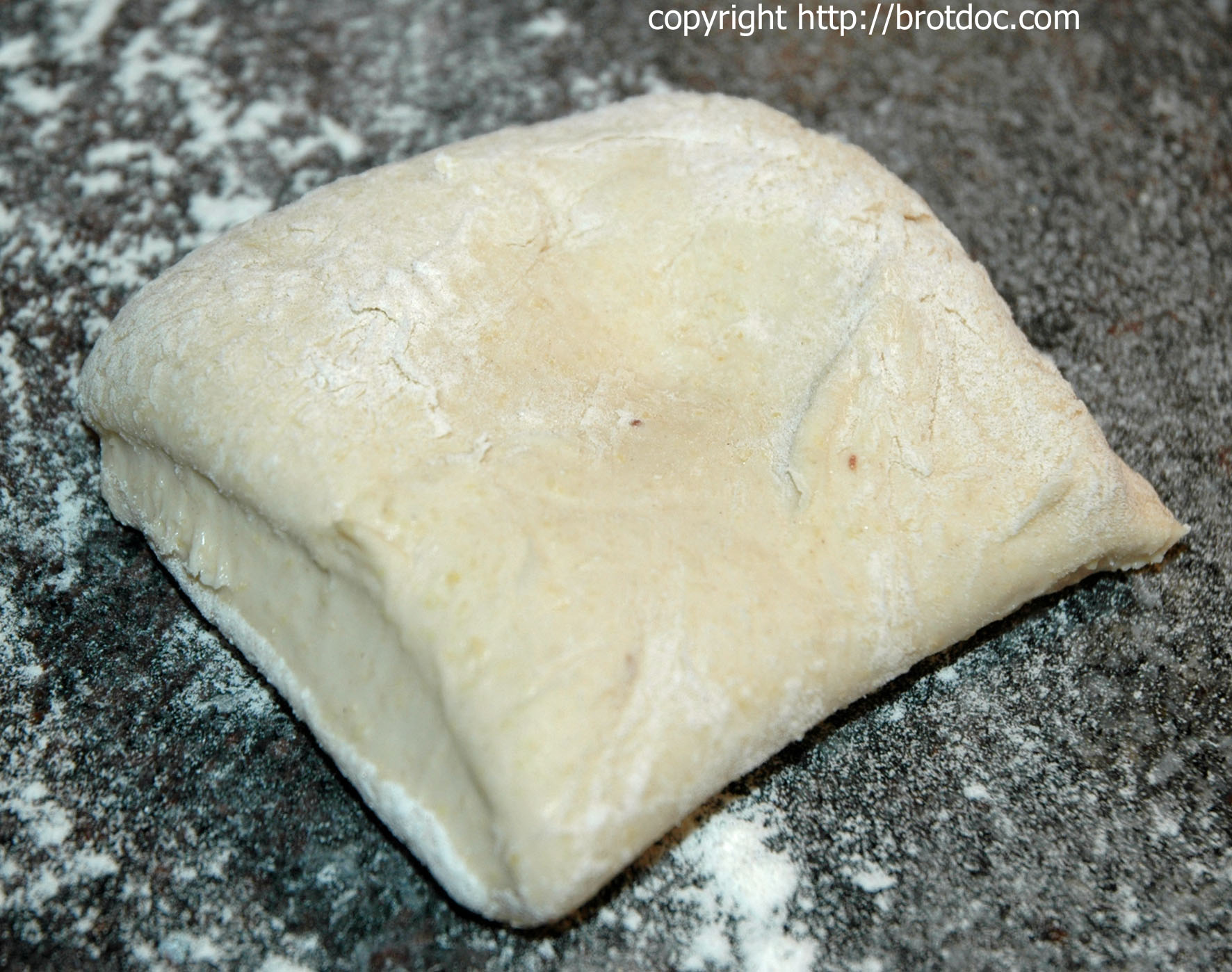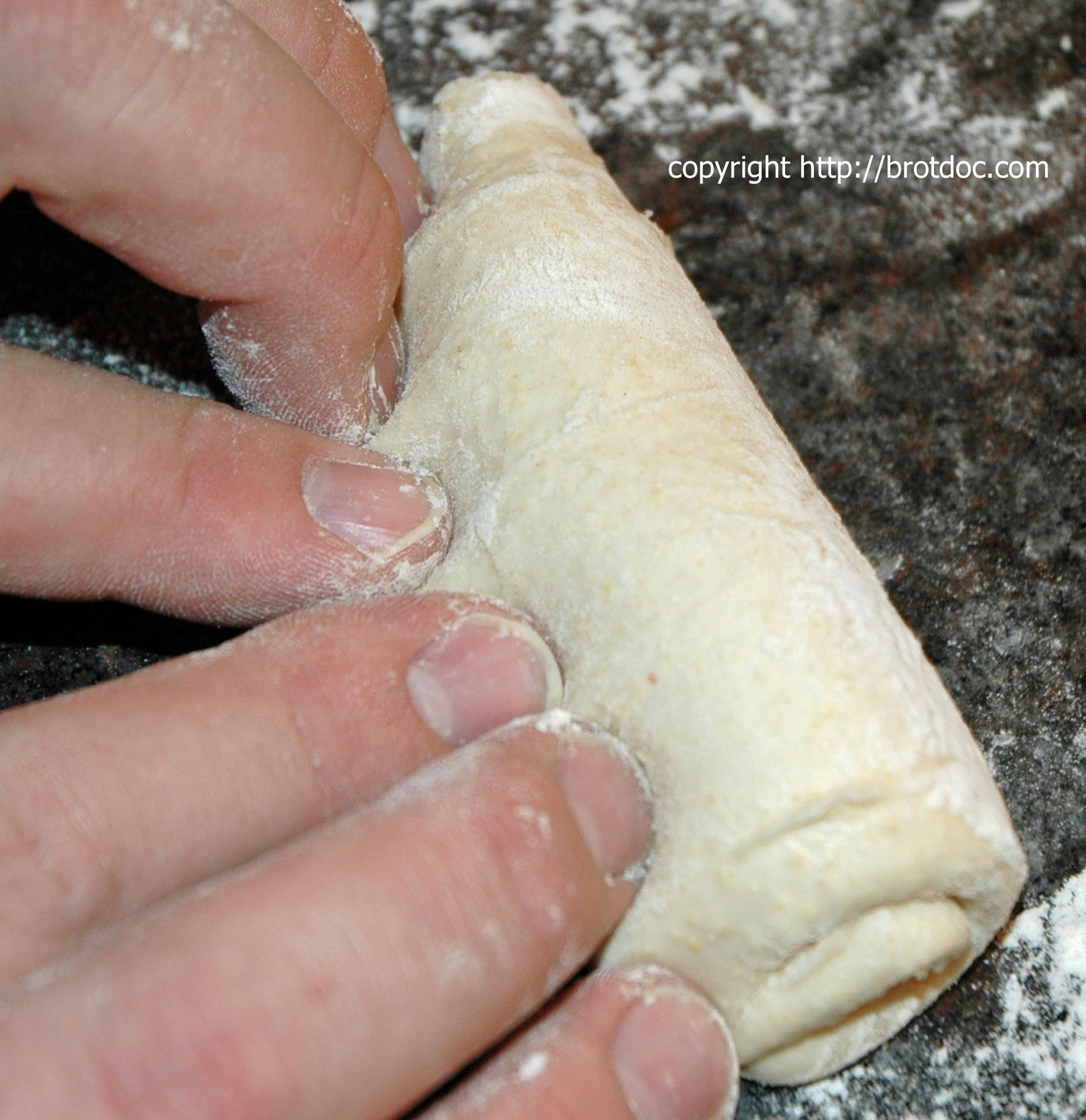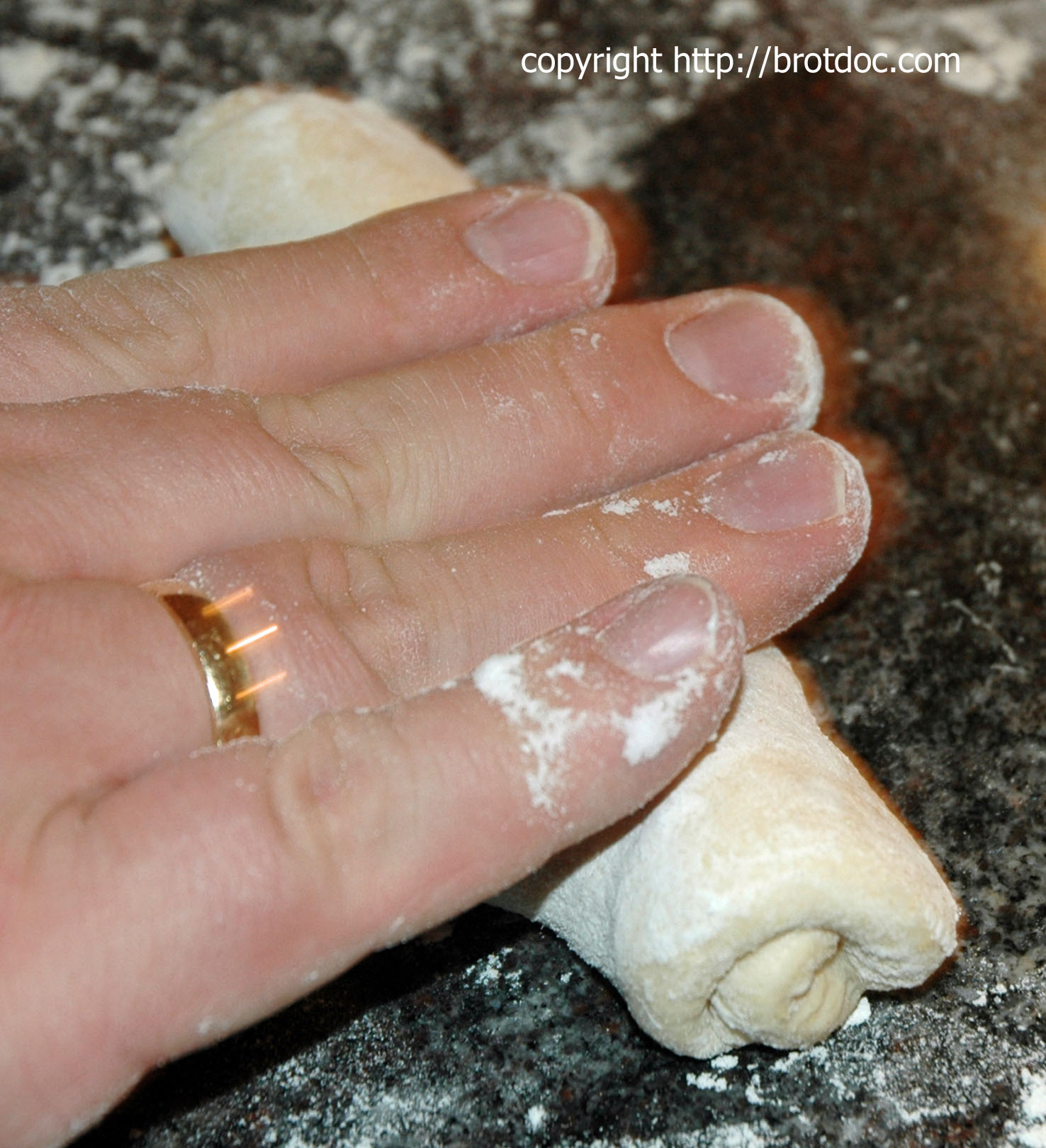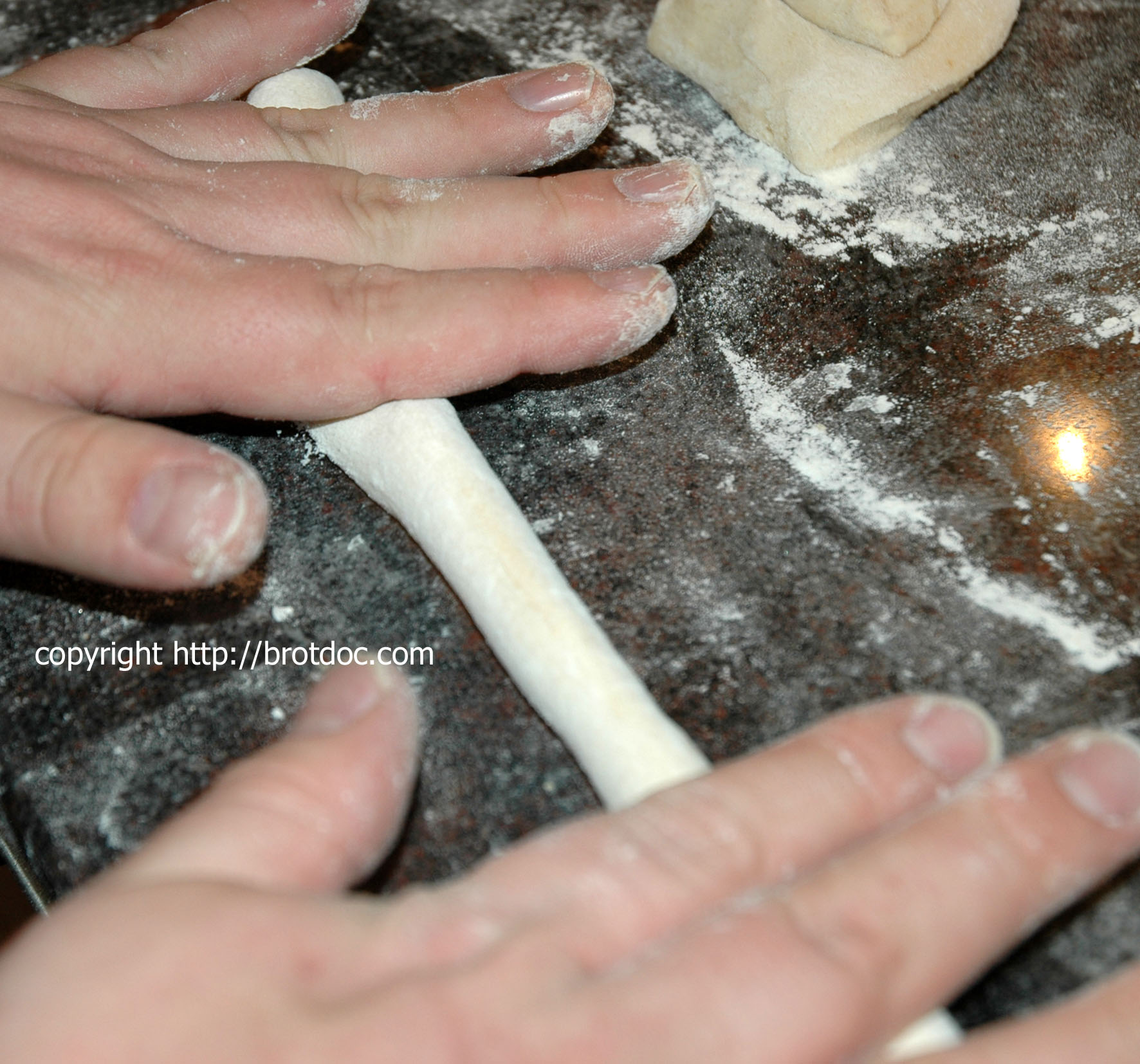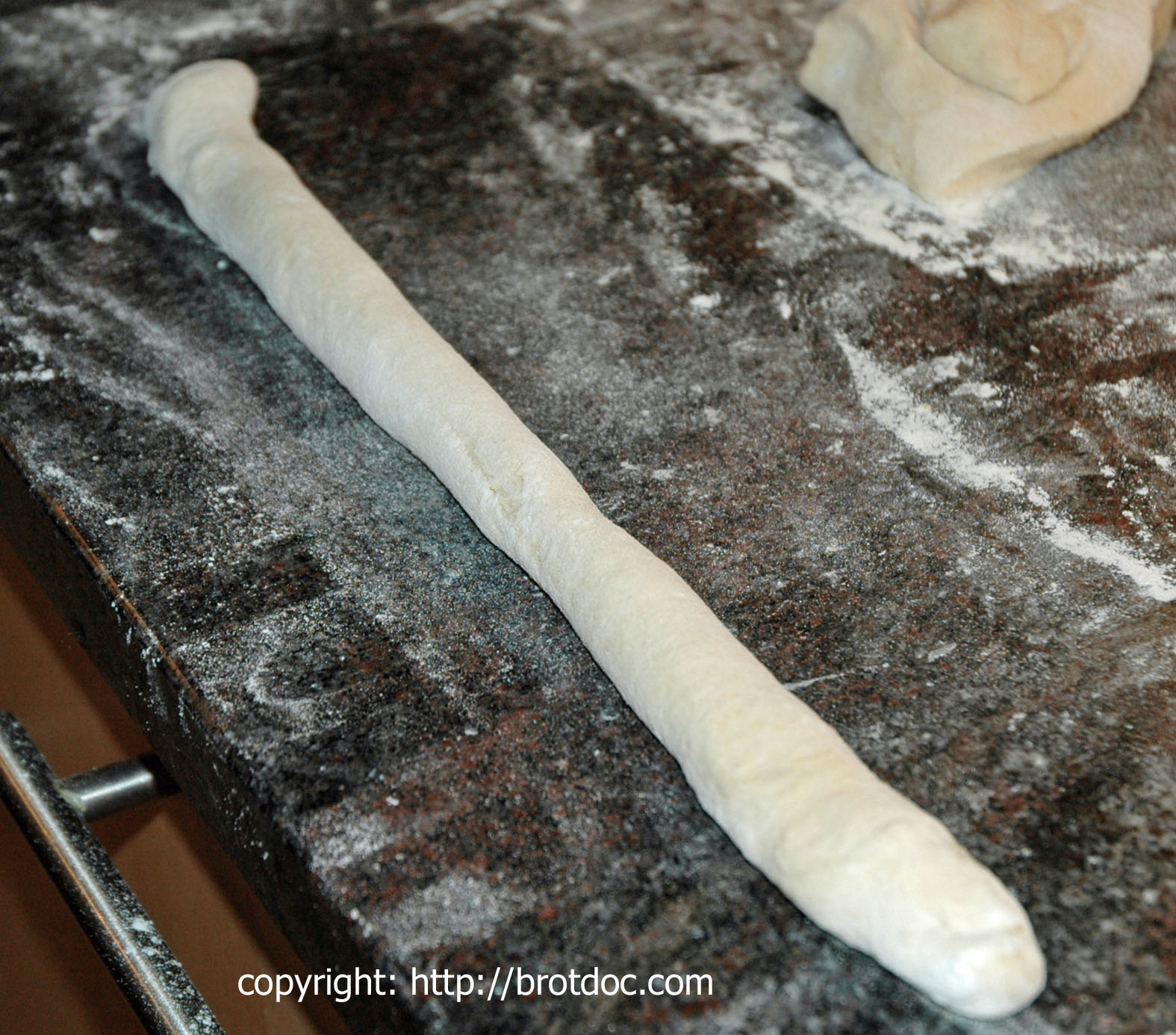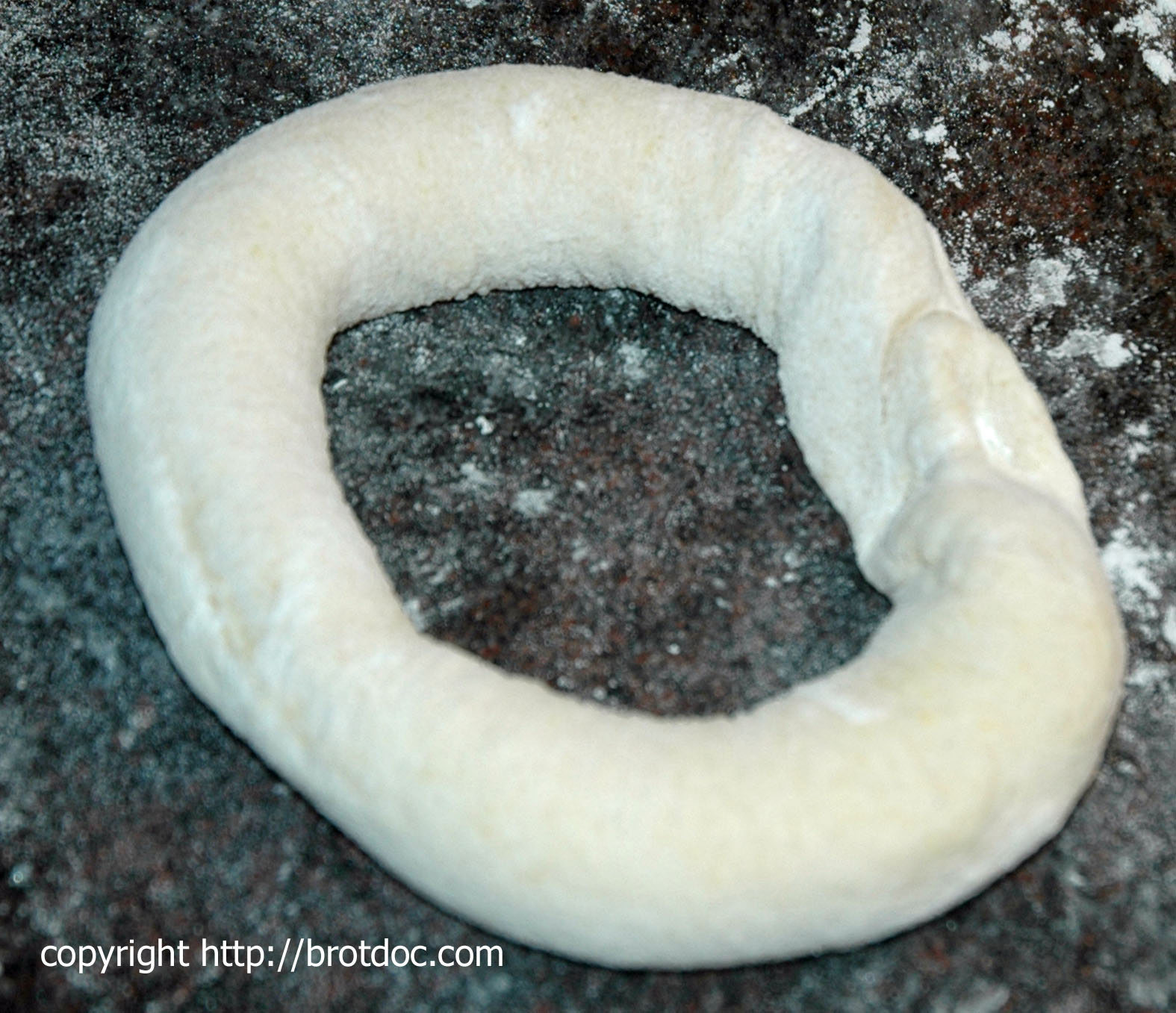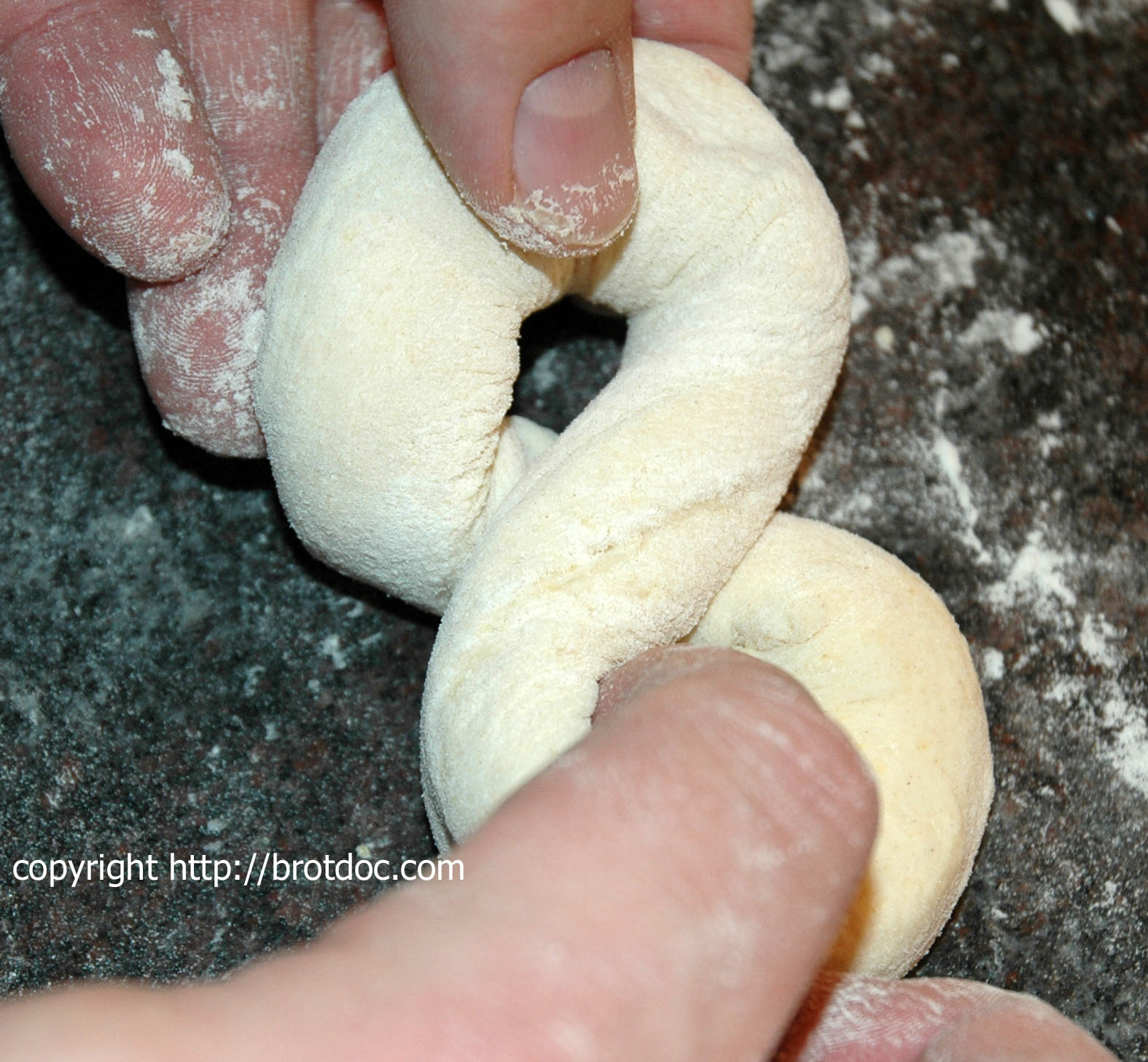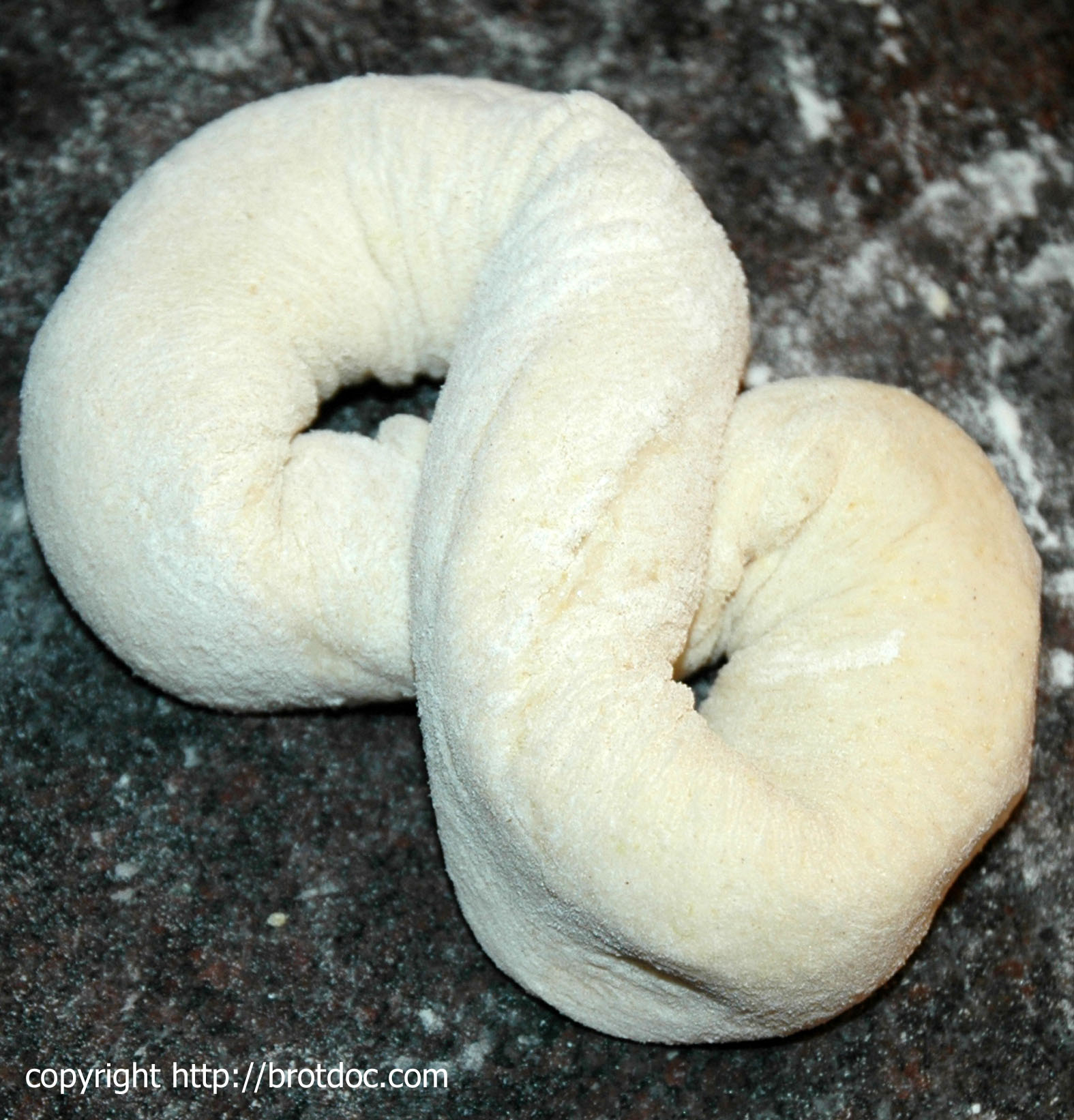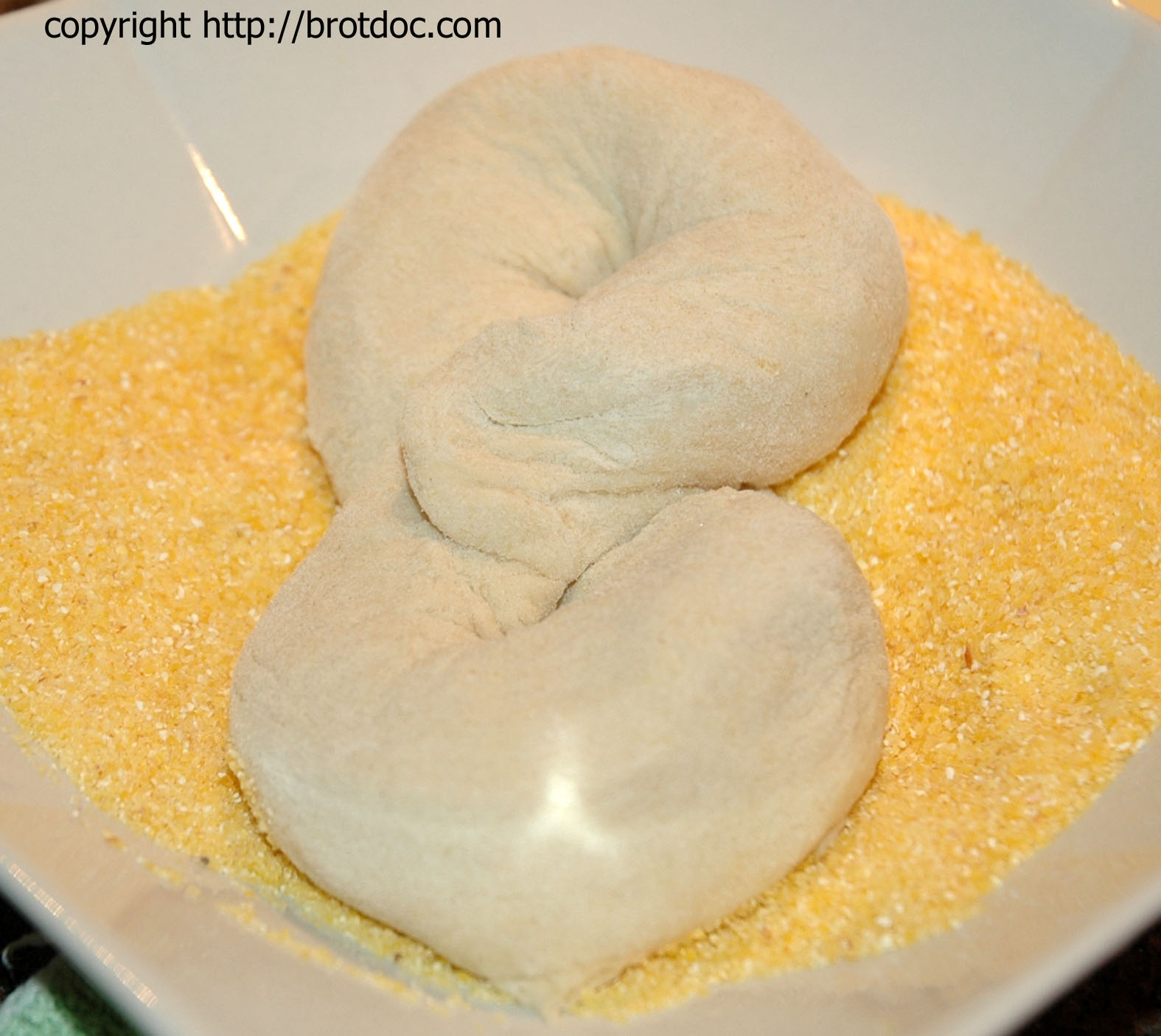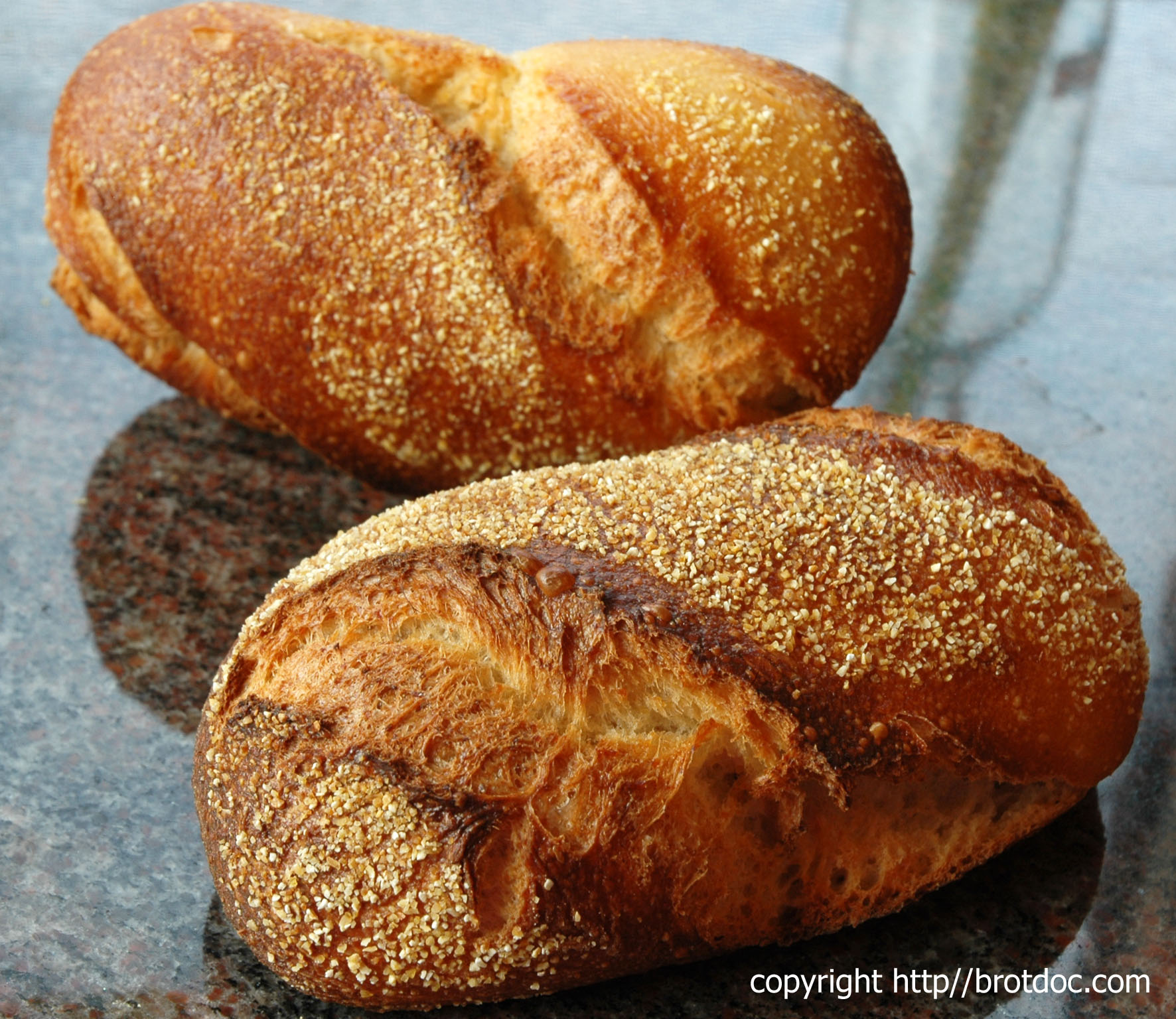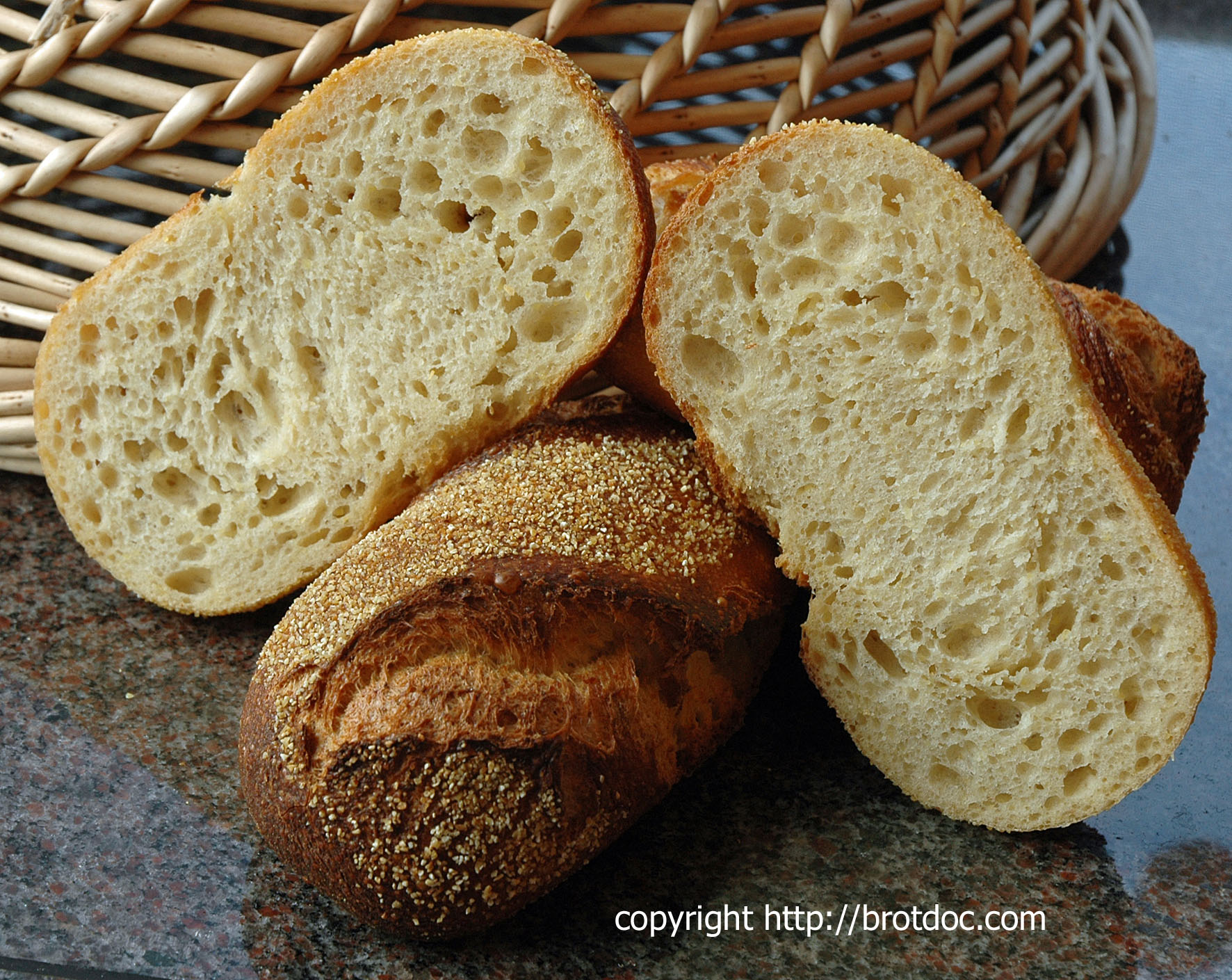Als ich noch klein war, konnte man bei unserem Dorf-Bäcker Maisbrötchen kaufen. Sie waren etwas weniger aufgeblasen als die normalen weißen Brötchen, saftiger und hatten eine knusprige Kruste, auf der Maisgrieß haftete.
Obwohl ich ein regelrechter Mais-Liebhaber bin, habe ich bislang selten Brot damit gebacken. Vor 2 Wochen geisterte mir dann nachts ein Rezept durch den Kopf, in dem gequollenes Maisgrieß (Polenta) verbacken wird. Gedacht – getan. Beim ersten Backversuch hatte ich noch zu viel Flüssigkeit im Teig und die Teiglinge verloren über Nacht ihre Form. Beim zweiten Versuch war alles gut. Herausgekommen sind richtig leckere Maisbrötchen mit sehr guter Frischhaltung.
Polenta:
100 g Mais-Grieß
200 g Wasser (kochend)
3 g Salz
Gut vermengen und im Kühlschrank quellen lassen. Hält bis zu 3 Tage.
Roggen-Sauerteig:
60 g Roggenmehl 1150
40 g Wasser
6 g Anstellgut
Vermengen und 12 Stunden bei Raumtemperatur reifen lassen.
Kalte Autolyse:
740 g Weizenmehl 550
250 g Milch
200 g Wasser
Vermengen und 11 Stunden in den Kühlschrank geben. Vor dem Kneten ca. 1 Stunde akklimatisieren lassen.
Hauptteig:
Polenta, Roggensauerteig, Autolyse-Teig
20 g Butter
20 g Honig
17 g Salz
13 g Hefe
Alle Zutaten in den Kneter geben und für 2 Minuten langsam, 3-4 Minuten bei 2 Stufe zu einem glatten, mittelweichen und sich von der Schüssel lösenden Teig verkneten.
Den Teig 45 Minuten lang ruhen lassen. Auf die Arbeitsfläche geben und in 17 Teile von je etwa 100 g teilen.
Bildanleitung:
Nun die Teile zu einem Zylinder aufrollen.
Erst mit einer flachen Hand, dann mit beiden flachen Händen zu einer Rolle von ca. 40-50 cm ausrollen.
Die Rolle zu einem Ring zusammenlegen und die Enden zusammendrücken.
Mit beiden Händen den Ring ergreifen und gegeneinander verdrehen, so daß eine Acht entstehet. Darauf achten, daß die Verbindungsstelle des Kreises überdeckt wird.
Den Teigling befeuchten und in Maisgrieß wälzen. Mit der Grießseite nach oben in ein Bäckerleinentuch legen, zwischen den Reihen das Tuch etwas hochziehen. Das Tuch sollte auf einem Blech liegen, damit es nachher einfacher in den Kühlschrank zu geben ist.
Sobald alle Brötchen geformt sind und im Leinentuch liegen, klappt man die Überstände über die Teiglinge und zieht eine große Kunststofftüte über das Blech. Das gesamte Konstrukt wandert nun für 10-12 Stunden in den 4°C kalten Kühlschrank. Am Backtag werden die Folie wieder entfernt und die Brötchen vorsichtig auf Lochbleche gelegt.
Die Bleche kommen nun in den gut auf 240°C vorgeheizten Ofen, gut schwaden. Den Dampf nach 10 Minuten ablassen und die Brötchen insgesamt 20-22 Minuten bei gleicher Temperatur abbacken.

Eine schön gelockerte, saftige Krume
ENGLISH RECIPE
I love corn. In all its ways of preparation. Despite this fact I have only seldomly baked bread with corn. 2 weeks ago during a night suddenly a recipe spooked in my head which had polenta in a roll-dough. So I went to work and 2 tries later the following recipe was created. In the first try I had too much liquid in the dough, the rolls lost their shape during the retardation overnight. The second one was just fine.
The shaping is a little bit intricate, but I showed a step-by-step picture-instruction above in the german text.
Polenta:
100 g corn gravel
200 g water (cooking)
3 g salt
Mix properly and let soak in the fridge for 12 hours.
rye sourdough
60 g rye flour
40 g water (30°)
6 g starter
Mix properly and let mature for 12 hours at room temperature.
cold autolyse dough:
740 g bread flour
250 g milk
200 g water
Mix properly and let rest for 11 hours covered in the fridge. The dough should acclimatize to room temperature afterwards for 1 hour before being used, otherwise the main dough would be too cold.
main dough:
polenta, sourdough, cold autolyse dough
20 g butter
20 g honey
17 g salt
13 g fresh yeast
Mix everything for 2 minutes at slow speed, then for 3-4 minutes at second speed to a slightly soft dough which doesn’t stick to the bowl.
Let rest covered for 45 minutes.
Put onto the bench, divide into 17 pieces of 100 g each. Roll every piece to a cylinder first, then roll them out to long strands of 40-50 cm. Form a circle out of every strand. Then take the circle on both sides and twist it once, forming an „eight“. Take care, that the seam of the circle is below the center of the eight.
Dampen the rolls and dip them into corn-gravel. Then prepare a baking-sheet by putting a bakers-linen on it. Lay the rolls with the gravel side up on the linen, 3-4 rolls will fit in one row so that 5-6 rows should be enough. Pull up the linen slightly between the rows to prevent them sticking together. The overlapping linen is then turned over the rolls and the whole baking-sheet put into a big plastic bag to prevent drying. Cold proofing (retarding) in the fridge at 4°C is for 10-12 hours.
On the baking-day remove the plastic-bag and lay the rolls onto a baking sheet gravel side up. Put them into the preheated oven at 240°C. Steam properly so that the steam condenses on the surface of the rolls. Remove steam after 10 minutes. Baking time is approximately 20-22 minutes at 240°C.

